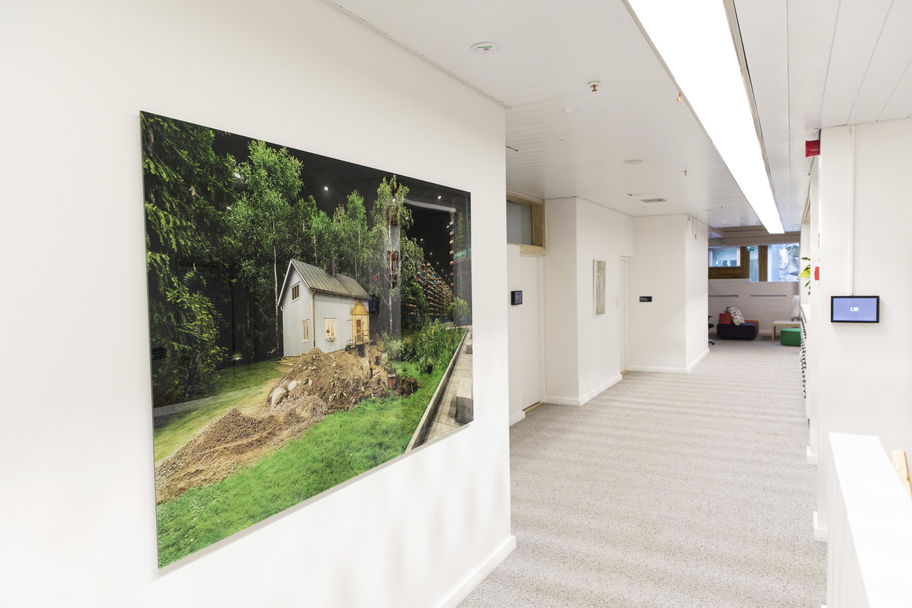Radical Nature
Radical Nature
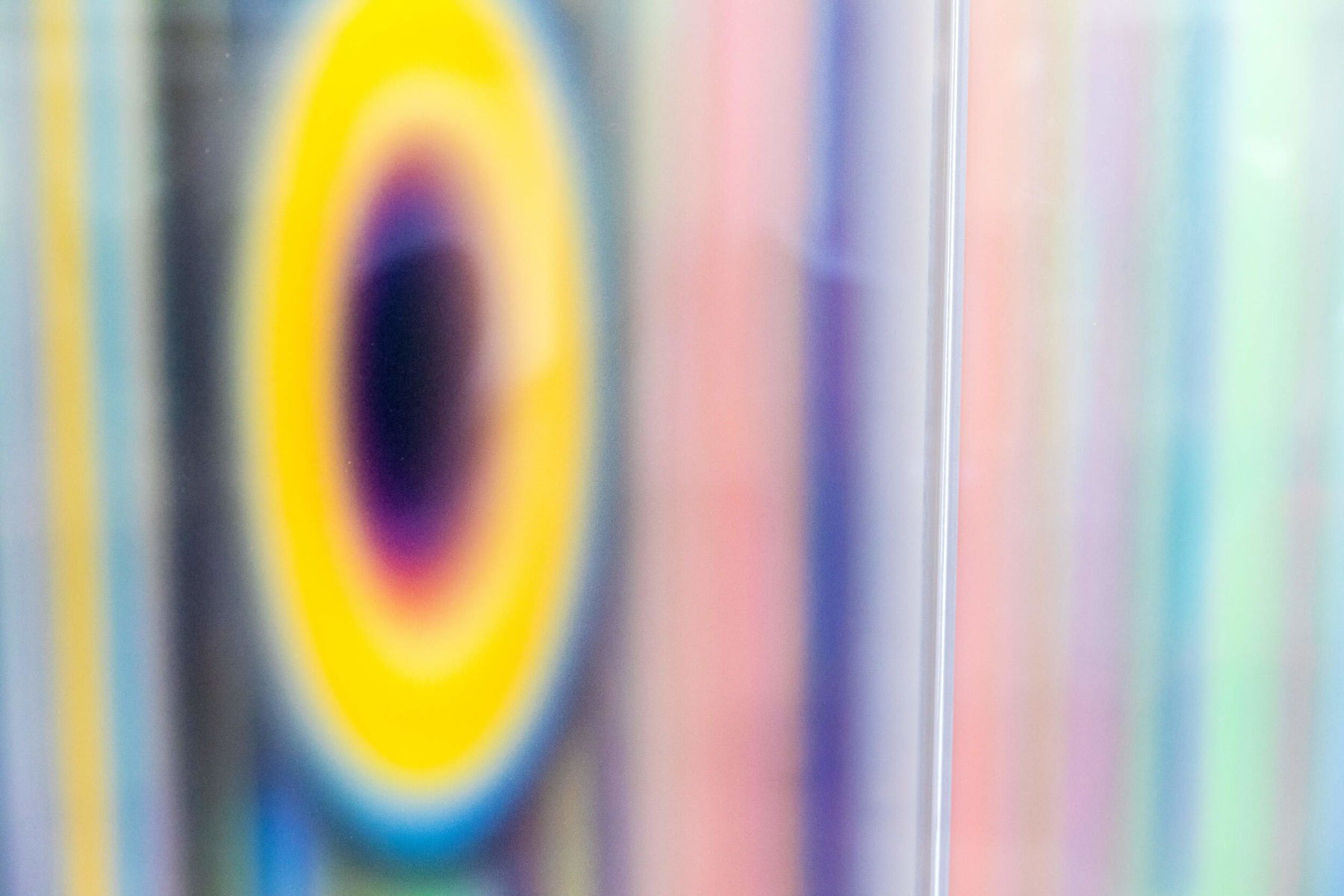
Radical Nature art collection at Dipoli
The Radical Nature art collection comprises 30 works, which have been selected specifically for the Dipoli building. The building designed by architects Raili and Reima Pietilä and completed in 1966 was reopened in September 2017 after undergoing extensive renovation.
'The collection's name Radical Nature references Dipoli's wild spaces of varying shape, but also to the responsibility people hold for the wellbeing of nature and the environment. For example, behind the beauty displayed by thousands of glittering drops of water in artist Renata Jakowleff's work, there is an underlying concern for the contamination of our seas and oceans and a optimism that we may find solutions to build a better environment,' explains Aalto Art Coordinator Outi Turpeinen. She has been responsible for curating the art collection and the procurement of art works.
The artists of the works are Aalto University alumni and represent numerous different fields of art. The majority of the works are from recognised and experienced photographers such as Elina Brotherus, Jorma Puranen, Ulla Jokisalo and Ilkka Halso. The art works also include a diverse range of materials, such as ceramics, metal, glass and plywood, and their artists include Hans-Christian Berg, Inni Pärnänen and Tiia Matikainen.
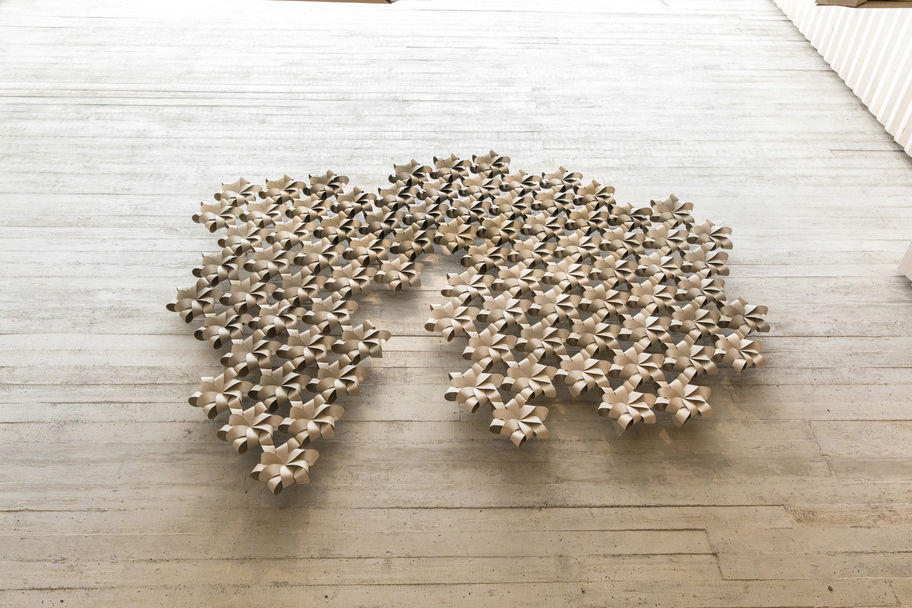
Radical Nature -julkisen taiteen kokoelma Dipolissa
Radical Nature -taidekokoelma koostuu yli 30 teoksesta, jotka on valittu juuri Dipoli-rakennukseen. Arkkitehtien Raili ja Reima Pietilän suunnittelema, vuonna 1966 valmistunut rakennus avattiin peruskorjauksen jälkeen syyskuussa 2017.
”Kokoelman nimi, Radical Nature, viittaa Dipolin villeihin ja vaihtelevan muotoisiin tiloihin, mutta myös ihmisten vastuuseen luonnon ja ympäristön hyvinvoinnista. Esimerkiksi taiteilija Renata Jakowleffin teoksessa tuhansien lasipisaroiden kimaltelevan kauneuden taustalla on huoli merten saastumisesta, toisaalta toive löytää ratkaisuja paremman ympäristön rakentamiseen”, sanoo taidekoordinaattori Outi Turpeinen. Hän vastaa taidekokoelman kuratoinnista ja hankinnoista.
Taiteilijat ovat Aalto-yliopiston alumneja ja edustavat useita eri taiteenaloja. Valtaosa teoksista on nimekkäiltä pitkän linjan valokuvataiteilijoilta, kuten Elina Brotherus, Jorma Puranen, Ulla Jokisalo ja Ilkka Halso. Teoksissa on myös materiaalien moninaisuutta, kuten keramiikkaa, metallia, lasia ja vaneria, ja tekijöinä muiden muassa Hans-Christian Berg, Inni Pärnänen ja Tiia Matikainen.
Art makes you want to do some extra steps
Hans-Christian Berg has an impressionist way of looking at nature. In his work “Color Space—Color lensing blind” he uses acrylics, which create an almost kinetic aesthetic experience. His site-specific artwork is an artistic interpretation of Pietilä’s architec- ture, which focuses on the use of light. Berg’s work questions the notion of nature with unexpected and radical color choices. His artworks create their own space, a kind of void. Hans-Christian Berg works with un- expected illusions, which are created in his spatial installations.
His work strongly suggests movement in front of the artwork in order to experience the optical changes. Often people might take extra steps, even dance in front of the artwork.
Berg works with various materials like metal, glass and plastics, but he is mainly known for this talent to challenge the immate- riality of light. His artwork creates a symbio- sis between light, material and space, which has an immaterial character somewhere in-between an image, form and space. The spectator’s orientation and direction alters the very perception of depth and tone, keeping them in constant flux.
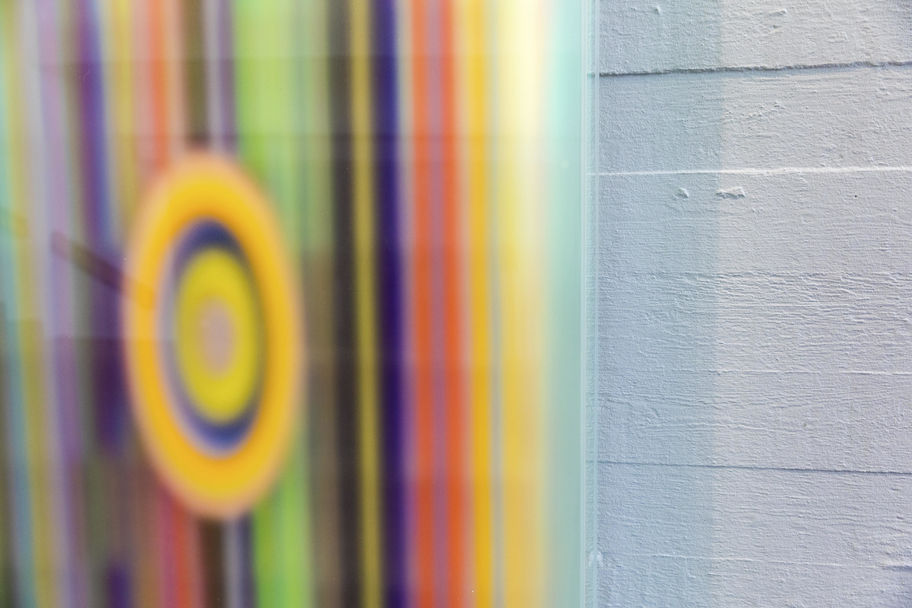
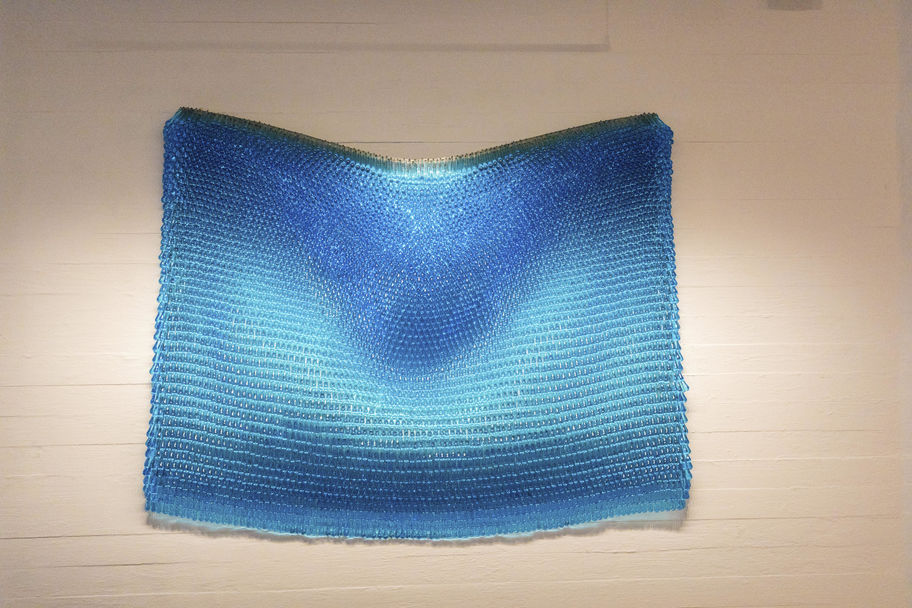
Beyond beauty
Renata Jakowleff’s glass artwork—which is made of over 5000 glass pieces—is truly beautiful. Glass has this amazing ability to seduce with movement and light. Depending on the time of the day or even different sea- sons, the artwork changes. The work is all about the sea and the shimmering surface. A sea in constant movement, it’s energy and the ability to change.
Then there is the other perspective; the fear of pollution, which raises the need to do something. This is the critical notion in art, beyond the beauty.
Renata Jakowleff has her own distinct way of treating materiality. With glass, this leads to an uncompromising approach. She seeks new ways of working and there is always a strong conceptual idea behind each piece.
In recent years, Jakowleff has worked with themes around deeply ecological questions. It makes sense that her medium is sensitive and enchanting, its beauty is fragile and delicate like the sea that inspired it.
Connecting hands and brain
Inni Pärnänen is working with new techniques in plywood, combining technology and craft. The repetition of geometric ideas create the structure of the artwork “Keto”. The work has a strong sense of materiality, which creates structural ornaments. Those structures connect natural material with technology and handcraft. All the chosen materials and techniques follow the principles of sustainable design.
The colour choices of “Keto” are inspired by the architecture of Dipoli. There is feeling of expanding the sense of nature inside the building and the artwork looks as if it has always been there.
Inni Pärnänen is mainly known as a jewelry artist. However, she is looking beyond the form, playing with the idea of scale; moving from very intimate into more spatial. For Pärnänen art is all about working with technique. For her there is this elementary connection between the hand and the brain, which can lead to a meditative state.
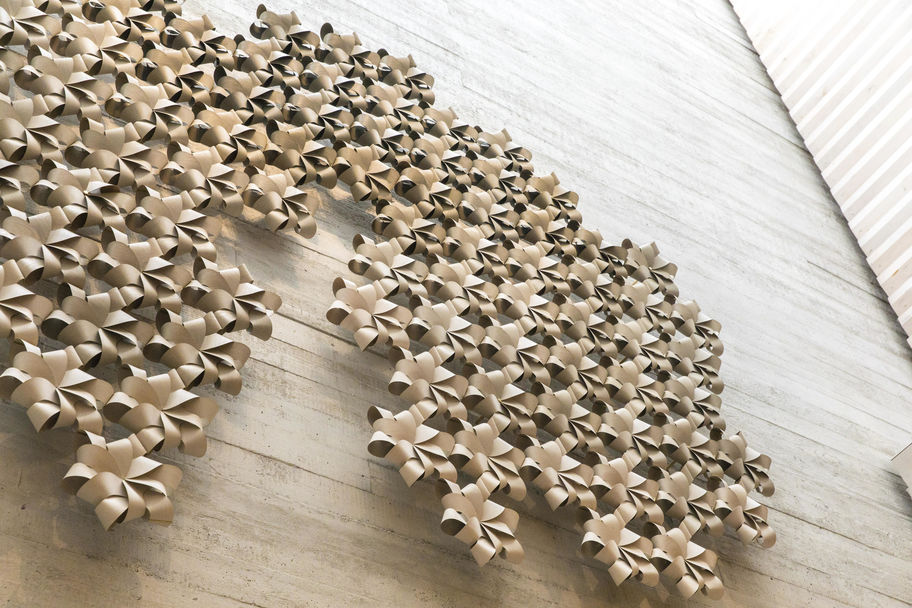
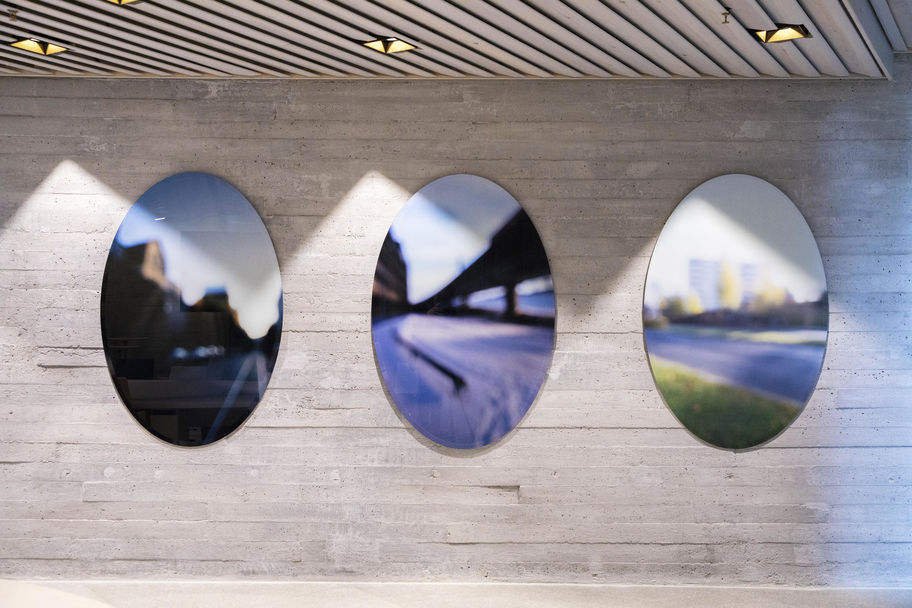
Light. Camera. Action.
Contemporary Finnish photography is often associated with depictions of pristine landscapes and solitary figures in the midst of wilderness. Thankfully, the picture is actually more complicated as nature resonates in countless different ways in the practices of Finnish photographers. Rather than being a mere object of representation, nature provides a material domain of agencies upon which a plethora of photographic operations are conducted. The works by the Aalto University alumni displayed in the Dipoli building provide ample evidence of this.
First, we are confronted with explo- rations that test the limits of our perception with the help of nature ranging from the at- mospheric or celestial (Marjaana Kella) via the exotic or foreign (Sanna Kannisto) to the everyday (Kari Soinio). Second, we can engage with nature as a material scene for photographic performances ranging from meditative poetics of repetition (Kristoffer Albrecht) to the rituals of self-portraiture (Elina Brotherus). Finally, we can observe nature as a material photographic agent through plant motifs and experiential pro- cesses ranging from cyanotype (Elina Julin) to silver-dye bleach and giclée prints (Marjukka Vainio).
All this — research-orientation, performativity, materiality — tells us that photography is fundamentally not about creating two-dimensional objects, but rather about exposing us to the contingencies of the world, here and now.
Marko Karo, Lecturer / Aalto University
Photographers from the Helsinki School
The selection of photographs for Dipoli— based upon the theme “Radical Nature”— represents the diversity and depth of those artists who have helped build the foundation from which the Helsinki School has been built. Selected artists include Ilkka Halso, Ulla Jokisalo, Niko Luoma, Jyrki Parantainen, Jorma Puranen and Santeri Tuori. Conceived as an extension of the photography depart- ment in the 1990’s, the Helsinki School has grown into one of the world’s most recogniz- able gallery programs. Now in its fifth generation, with over 140 books accredited to the artists evolving from this unique platform, the Helsinki School is measured not only by its persistence, but through its commitment to finding new ways to support student needs.
Great content has always been the key and cooperation a bridge to reach further. This combination has been one of the vehicles by which we have taken the class out of the classroom and into an international arena. Our goal is to help our students find an audience so that they can move into their career, prepared and aware.
One of the core themes that is central to those within the Helsinki School is how they interpret the passage of time by the use of light, the changing of seasons and their personal histories as a means for creating their own internal landscapes.
Timothy Persons, Adjunct Professor / Aalto University
